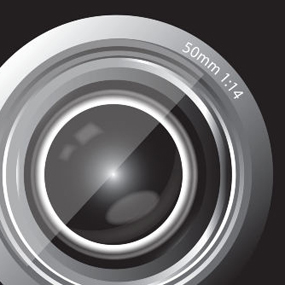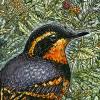

Join BirdNote tomorrow, November 30th!
Illustrator David Sibley and actor H. Jon Benjamin will face off in the bird illustration battle of the century during BirdNote's Year-end Celebration and Auction!
The Pileated Woodpecker makes loud, hard whacks, as it leans back and then slams its bill into the side of a living tree. Sounds painful, if not downright disabling! How does the woodpecker's brain withstand it? All woodpeckers have an enlarged brain case, so the brain sits above the level of direct hammering impact. The skull's frontal bones - together with a set of muscles at the bill's base - act as a shock absorber.
Find your local Audubon chapter and learn more about birds.
Support comes from Sasquatch Books, offering BirdNote, the Book – for holiday gift giving. With stories of 100 birds. More at SasquatchBooks.com.
BirdNote®
No Pounding Headache
Written by Bob Sundstrom
[Loud drumming of a Pileated Woodpecker]
As any artisan knows, when you have a job to do, it pays to have the right tools.
[Loud drumming of a Pileated Woodpecker]
This is BirdNote. And THAT is a Pileated Woodpecker, as it leans back and then slams its chisel of a bill into the side of a living tree. Now, most animals would be knocked unconscious by slamming their faces into a tree at twenty-five miles per hour.
[Loud drumming of a Pileated Woodpecker]
But not this one. A skilled carpenter. Its head is its primary tool. And it's highly evolved for the job. All woodpeckers have an enlarged brain case, so the brain sits above the level of direct hammering impact. The skull’s frontal bones, folded at the base of the bill, act as s shock absorber, together with a set of muscles there.
Now out comes the woodpecker’s amazing tongue, at least three times the length of its bill, with sticky barbs at the tip, to snag ants and other insects deep in the tree. When not extended, the tongue is sheathed up the back of the bird’s skull, curling all the way around to the eyes!
[Loud drumming of a Pileated Woodpecker]
So knock on wood! If you’re lucky, there’s an Audubon chapter near you, ready to help you learn more about the amazing abilities of birds. Begin with a visit to our website, birdnote.org. I’m Michael Stein.
[Call of Pileated Woodpecker]
Support comes from Sasquatch Books, offering BirdNote, the Book – for holiday gift giving. With stories of 100 birds. More at SasquatchBooks.com.
###
Call and pecking of the Pileated Woodpecker provided by The Macaulay Library of Natural Sounds at the Cornell Lab of Ornithology, Ithaca, New York. Excavating sound of Pileated Woodpecker [119461] recorded by G.A. Keller. Hurried call of Pileated Woodpecker [63129] and pecking of Pileated Woodpecker [47703] recorded by D. S. Herr.
BirdNote's theme music was composed and played by Nancy Rumbel and John Kessler.
Producer: John Kessler
Executive Producer: Dominic Black
© 2014 Tune In to Nature.org December 2016/2018 Narrator: Michael Stein
ID#122205peckKPLU woodpecker-02d










